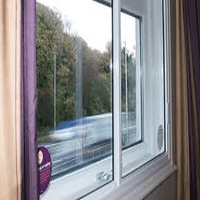At Hamilton Glass Products we supply and install glazed units for secondary, double and triple glazed windows.



When choosing whether to go with secondary glazing, double glazed units or triple glazed units the choice typically depends on what the customer is hoping to achieve.
Secondary glazing is often chosen to retain the vintage look of a property, for example Victorian windows. Or alternatively, Secondary glazing is often the best option when the property is a listed building or within a conservation area and alterations or repairs are limited by what is permitted.
Double glazed units are the most common choice for windows today, providing a variety of benefits, such as better insulation, acoustic resistance and contemporary look. The options available for double glazed units are extensive, read on below to learn about some of these options.
Triple glazed units are less common and a fairly new option to windows. With an extra pane of glass and spacer compared to double glazed units, the level of insulation and acoustic resistance is increased.
Glazed units for Secondary Glazing:
Secondary glazing, simply put, is a layer of glazing (of any makeup), that is designed to fit inside of existing glazing, be that single or double glazed. Whilst secondary glazing does provide some level of insulation, the main reason it is sometimes preferred is due to the fact that it helps to cancel out noise.
For this reason alone, it is a very popular choice for flats and old-style buildings situated within busy cities, such as London.
Double Glazed Units:
Double glazing is pretty much the standard choice for replacement these days and is almost always installed in new builds, many older properties are either undergoing or have undergone the change from single to double glazing. Double Glazing is a versatile product, in that it is suited for all properties due to the variety of style and design.
The unit thickness will typically vary between 14mm up to around 32mm, this is usually based on the glass itself has a thickness of between 4mm (standard window glass) to 6.4mm (laminated) and then between 6mm to 20mm spacer bars. However, different makeups and their intended use can extend well beyond these sizes.
Due to the space between the two panes of glass, which is typically filled with either air or insulating gas (such as Argon), this creates a pocket which blocks the flow of air and results in better insulation and energy efficiency, as opposed to normal single glazed windows.
Triple Glazed Units:
Triple glazing is similar to double glazing, the only difference being is that the unit is formed of 2 panes of glass instead of 3 and as this results in two insulating spaces, the level of insulation and energy-saving is increased. Technically speaking, the sound insulation increases as well, but this really depends on the type of glass used.

